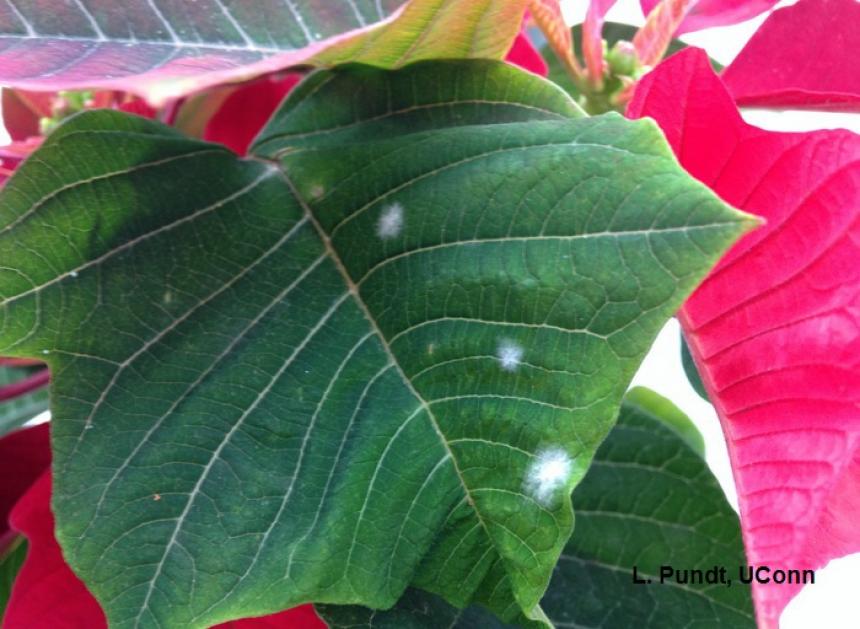Powdery mildew (Oidium species) was first seen in US greenhouses in the 1990s and has since occurred sporadically. White colonies occur on both leaves and flower bracts, reducing aesthetic value. It has no known hosts other than the poinsettia so will not survive in northern climates unless it is carried over on poinsettias in greenhouses. It is moved from greenhouse to greenhouse on infected cuttings or plants. The high temperatures of the summer months limit its growth. Powdery mildews, unlike most other fungal diseases, do not need free water to germinate and infect. Any activity with the crop such as spacing, or even spraying can disperse airborne spores. All cultivars of poinsettia tested have shown susceptibility to the disease. Powdery mildews are favored by high relative humidity (greater than 95%), moderate temperatures (68°-86° F), and low light intensities. Careful scouting can allow timely fungicide treatments, but great care in fungicide applications is necessary to avoid possible flower bract injury.
Center for Agriculture, Food, and the Environment
Center for Agriculture, Food, and the Environment
Stockbridge Hall,
80 Campus Center Way
University of Massachusetts Amherst
Amherst, MA 01003-9246
Phone: (413) 545-4800
Fax: (413) 545-6555 ag@cns.umass.edu
Civil Rights and Non-Discrimination Information
CAFE Units
Mass. Agricultural Experiment Station
UMass Research and Education Center Farms
Water Resources Research Center
